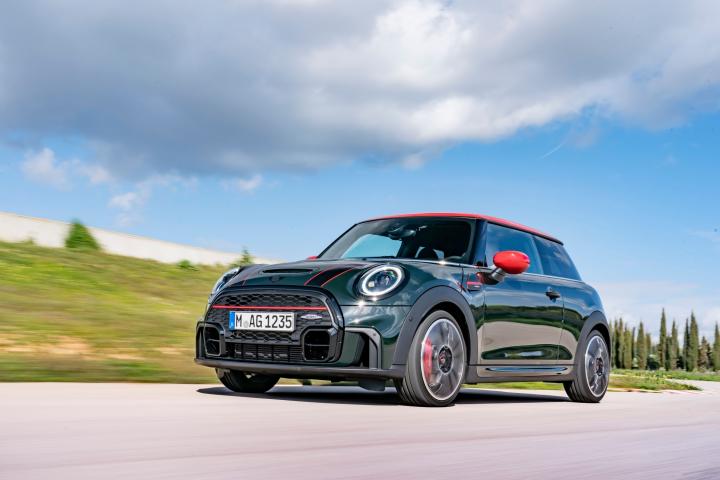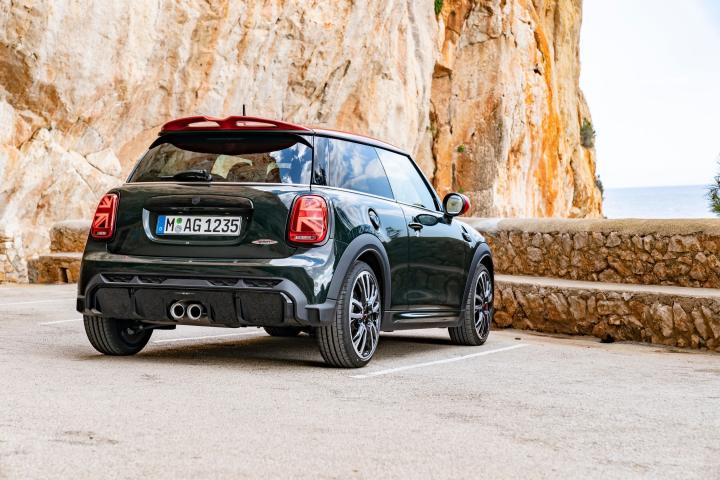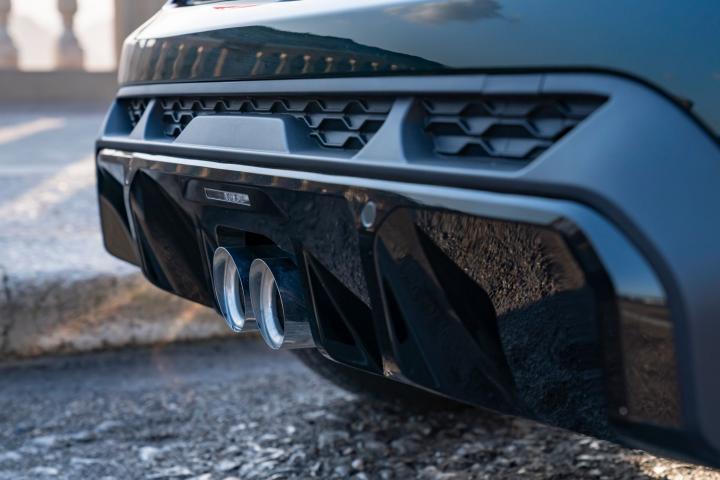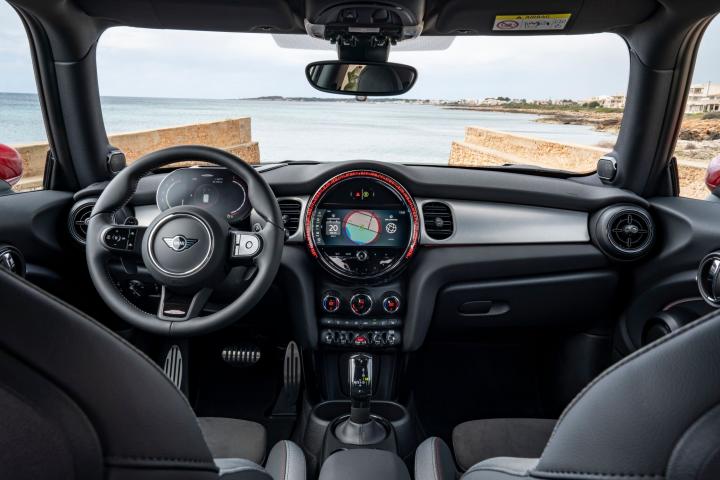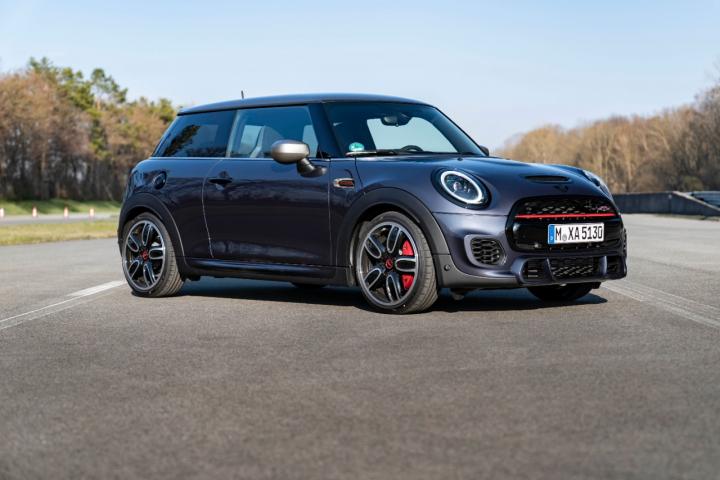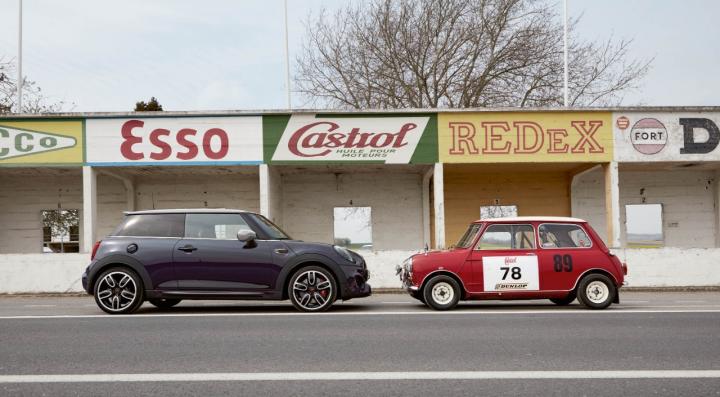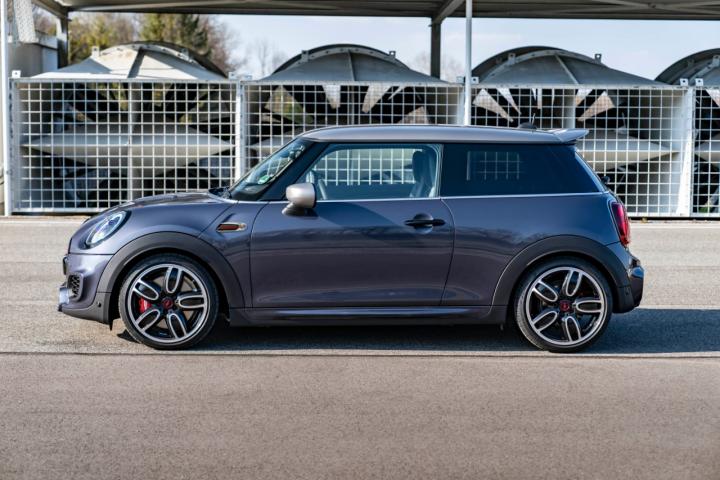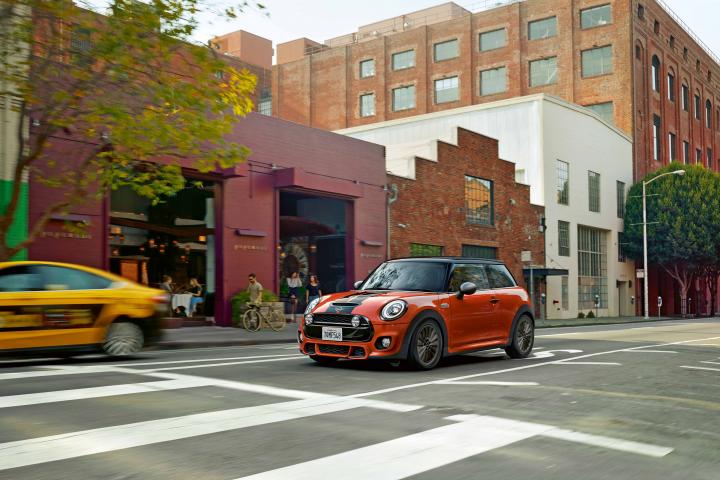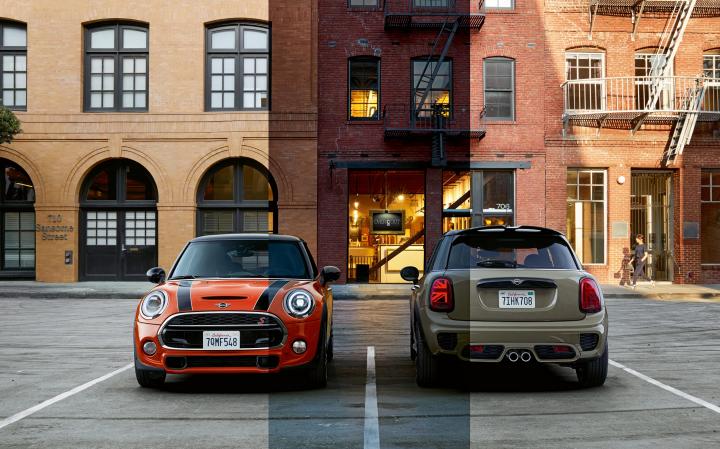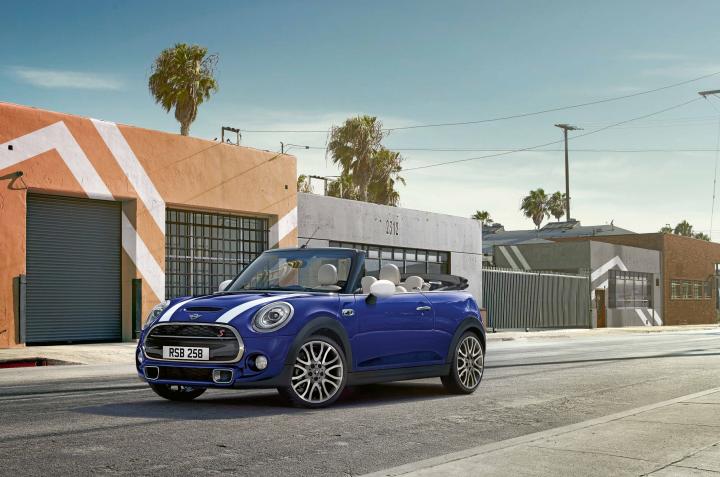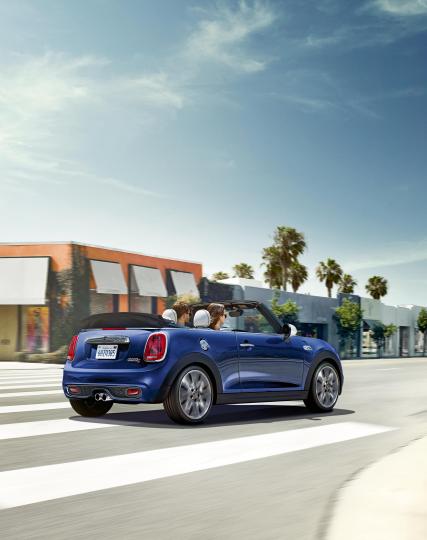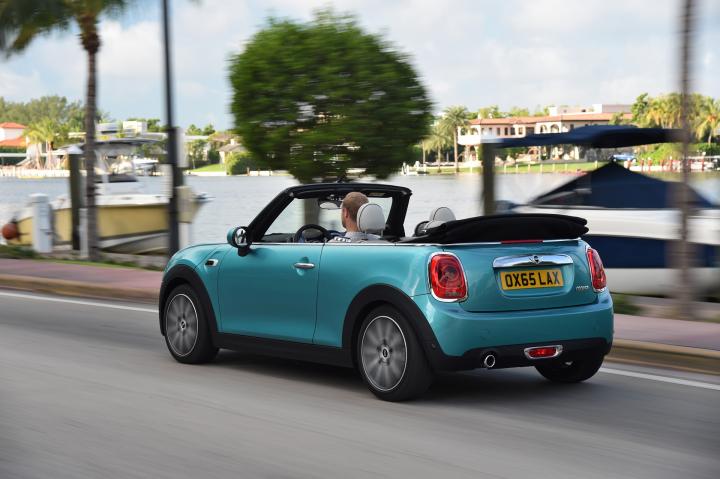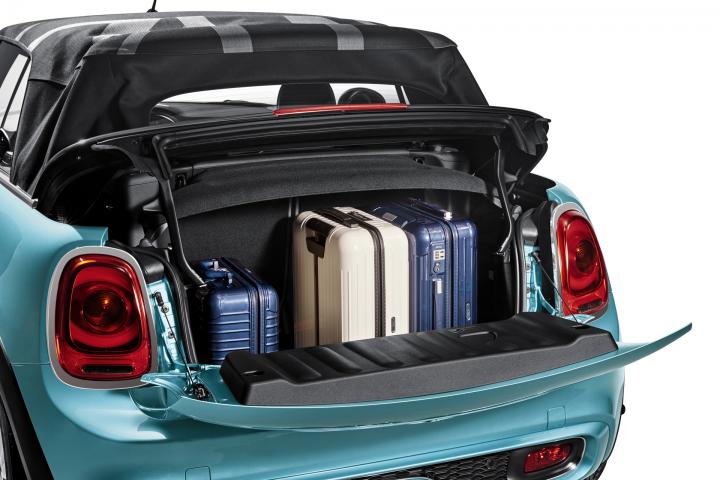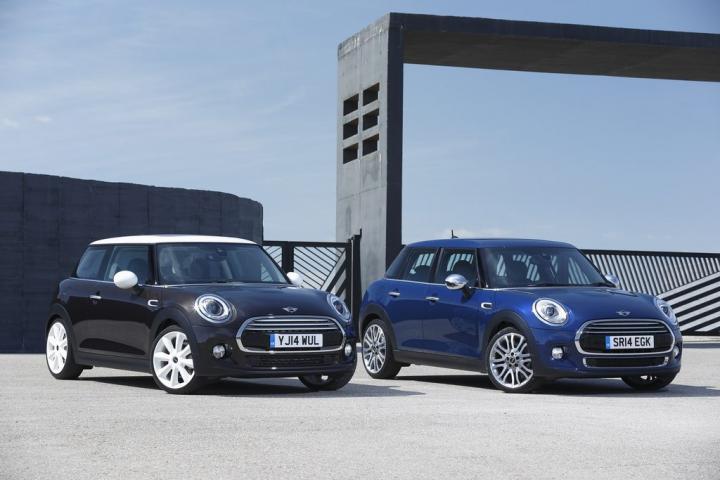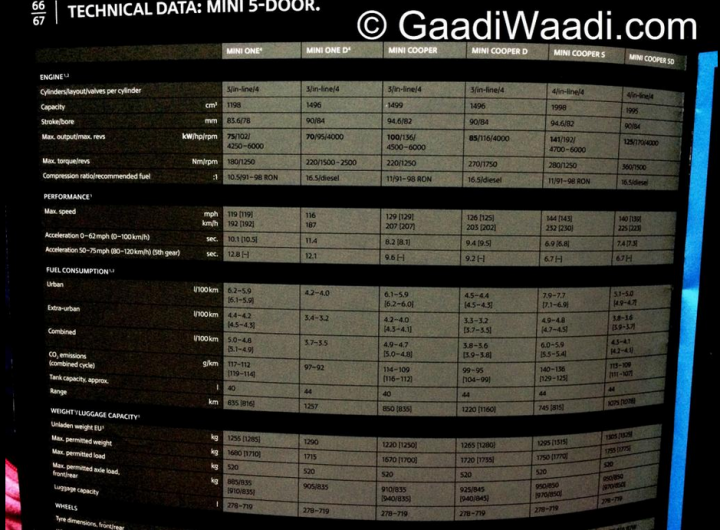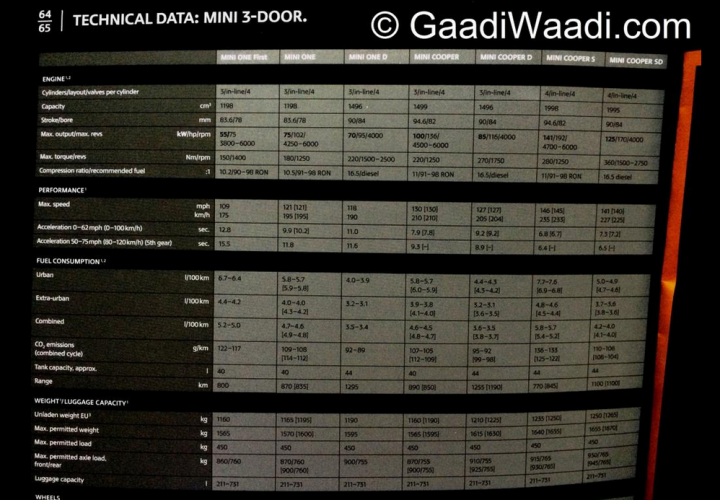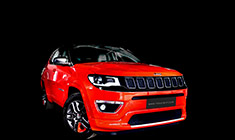News
My decade-old Mini Cooper gets a major Rs 2.4 lakh suspension overhaul
Remember, after doing the suspension work everything is intentionally left loose so you will have to drive to the best tyre and wheel alignment shop and get everything properly set.
BHPian shankar.balan recently shared this with other enthusiasts.
This post is about the age-related suspension overhaul / replacement on a German car.
My Mini Cooper’s suspension had hardened and the shocks/ dampers had become ‘dead’ as also the lower arms, ball joints and link rods and bushes and everything. Both front and rear. This is due to pure ageing and low usage for the first 7.5 years of its life.
All this was discovered recently when the car had reached the tender age of ~9.5 years. And I had to bite the bullet and get it done. This is a seriously expensive repair / overhaul job. This suspension job on a decade-old German car is going to cost at least Rs 2.4 Lakh or so including labour and all. There is no way out.
But it is also an investment in a car I really love. I regularly import difficult parts and trims for my Cooper so I sat and researched and compared the parts prices from BMW India and Mini Mania, Pelican Parts and ECS Tuning in the USA.
The parts overall seemed less expensive abroad and as per my real-life experience, the timelines for delivery are really superb - just one week from the date of order and payment if shipped by FedEx International Standard Shipping.
But there would be the freight cost to pay on the shipment and these are heavy parts. Then there is the question of IGST and Customs duty which is pretty exorbitant in India (48-50%). And more importantly, the levies are arbitrary and whimsical - the officer levies duty on the cost of parts and the freight most times and there is absolutely nothing one can do about it.
An important difference here is that BMW India would take anywhere between 2 weeks and 3 months depending on the parts availability in India or in their Warehouses in the EU. But I would get a clean landed price in INR.
Ultimately one way or another, it comes to more or less the same thing - the cost will have to be borne by the consumer, either in terms of money or in terms of time.
I then ordered the parts at BMW. Paid up. Waited quietly. Received the parts after around 2 months all told. Even then there were a few bits and pieces that I still needed to order from the USA which I did.
Then finally I sat and got the job done at Aeon Motor Works in Electronic City Veerasandra Industrial Area. The mechanics there - Umesh and Naveen and the owner Aniruddh, are extremely helpful. Umesh is a very good mechanic. He has a ‘feel’ and ‘instinct’ for cars that no amount of book knowledge and Electronic scanners and analysis can replicate.
One point to mention is had I done the job at BMW my labour costs would have been quite a bit higher. Since my car is way out of warranty I have preferred to stay as a regular customer, with an Independent expert garage, where I get undivided attention and can participate in the whole repairs and servicing process, thus improving my own knowledge as well.
Remember, after doing the suspension work everything is intentionally left loose so you will have to gingerly drive to the best tyre and wheel alignment shop you can find (in our case here in Bangalore it is Madhu’s) and get everything properly set. So as to make sure your tyres don't wear out unevenly.
After that, you have to go right back to the garage and ‘set’ and ‘tighten’ the steering and everything back to normal.
Here are a couple of pics of this massive surgery.
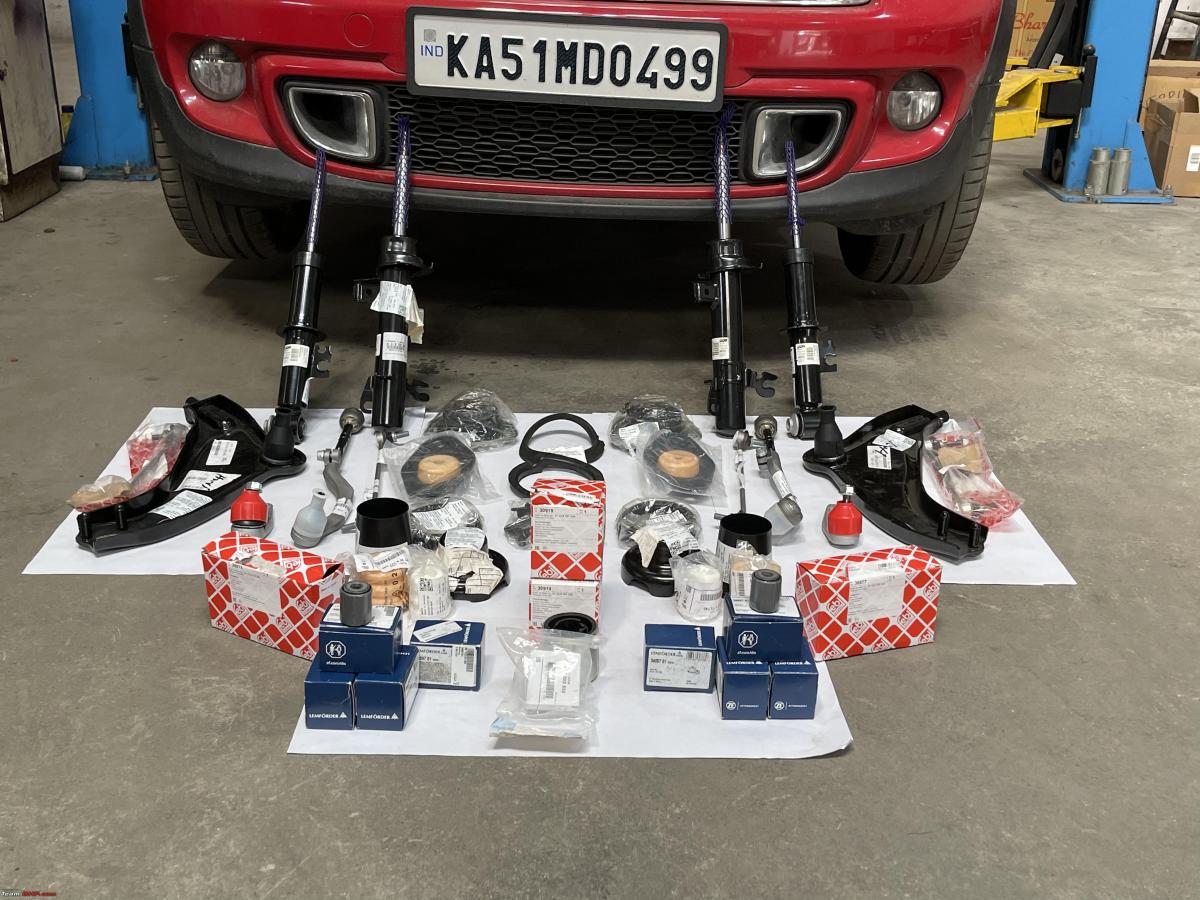
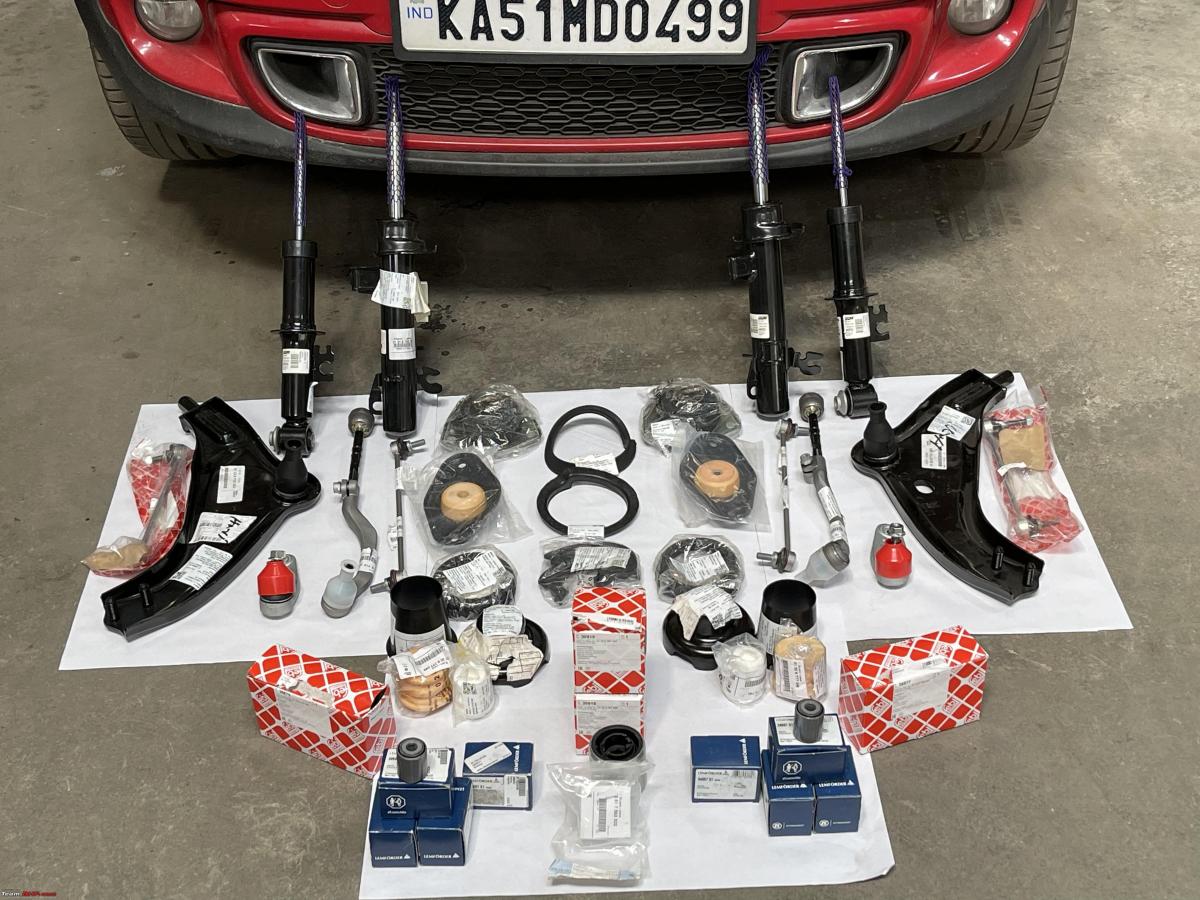
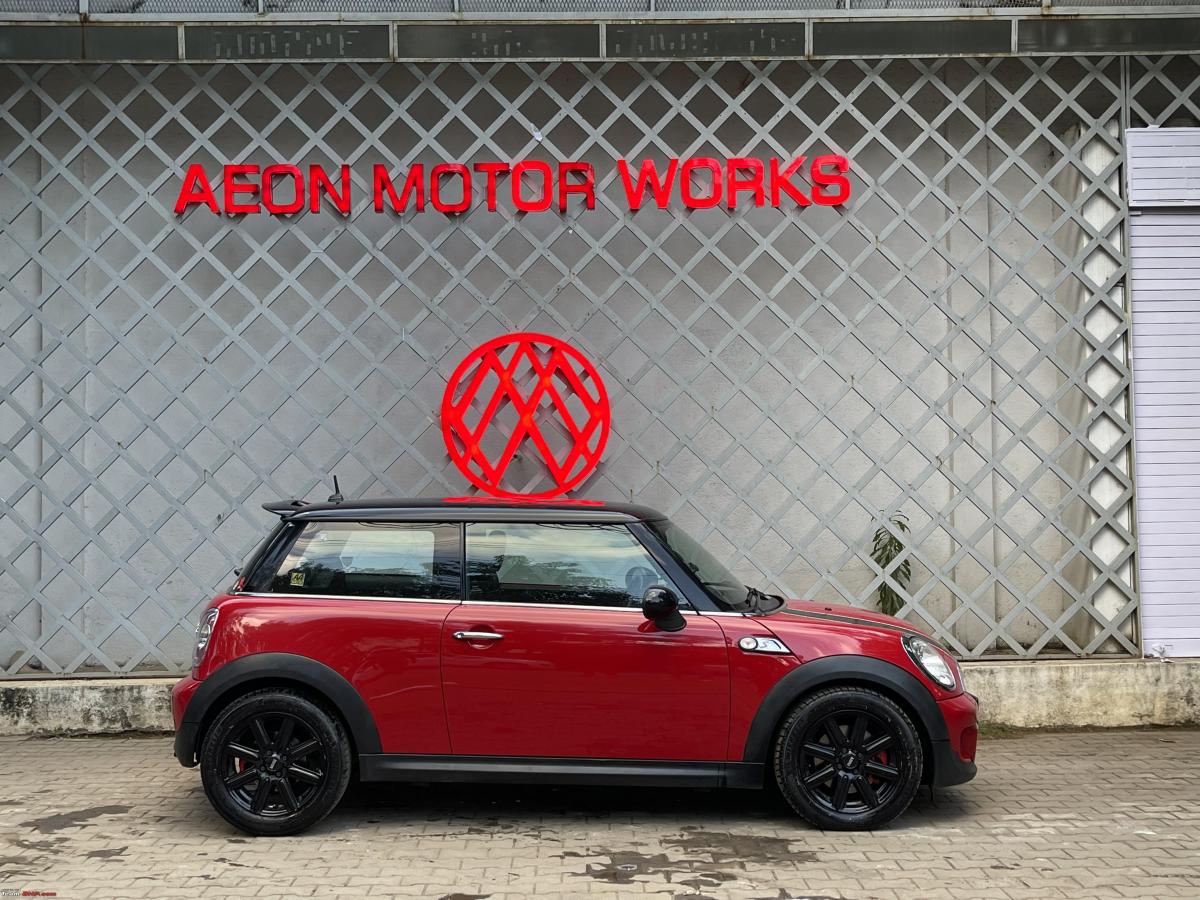
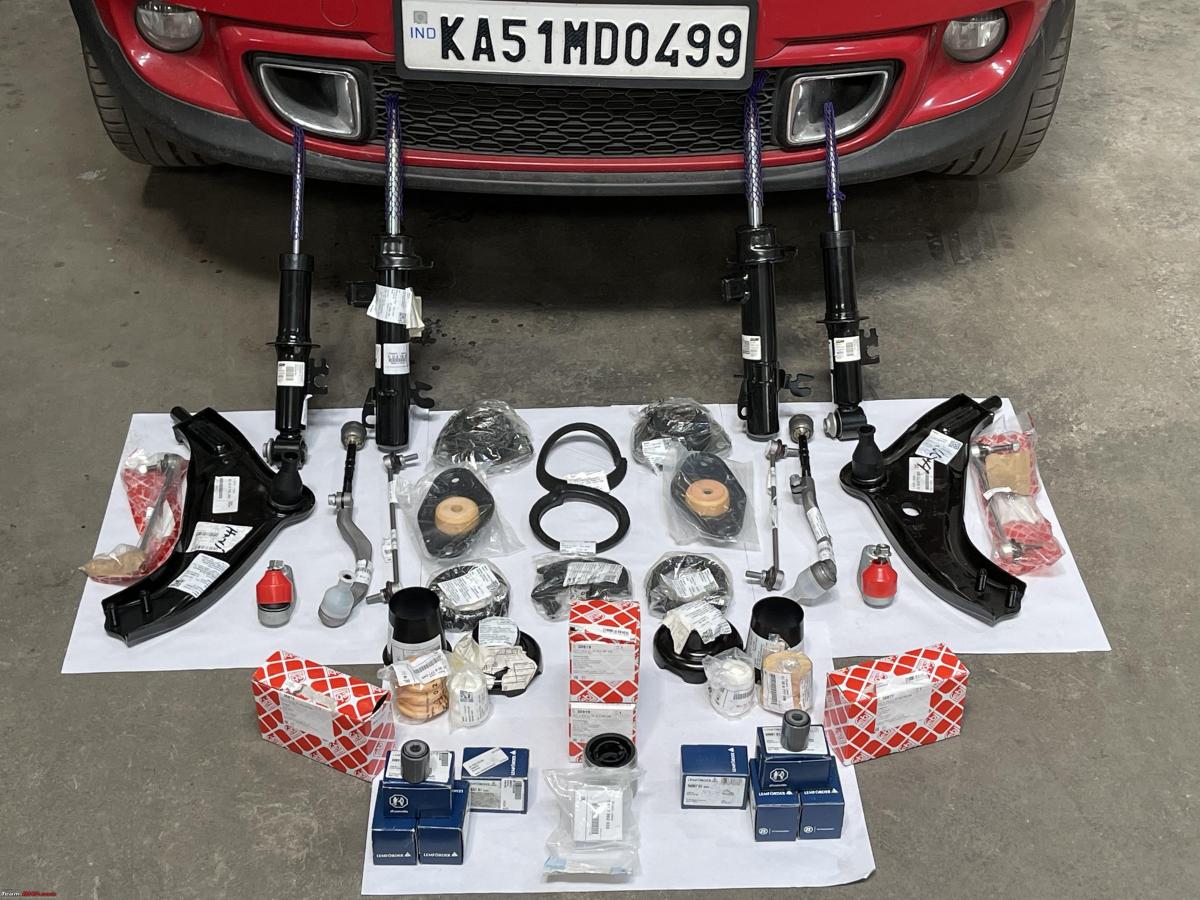
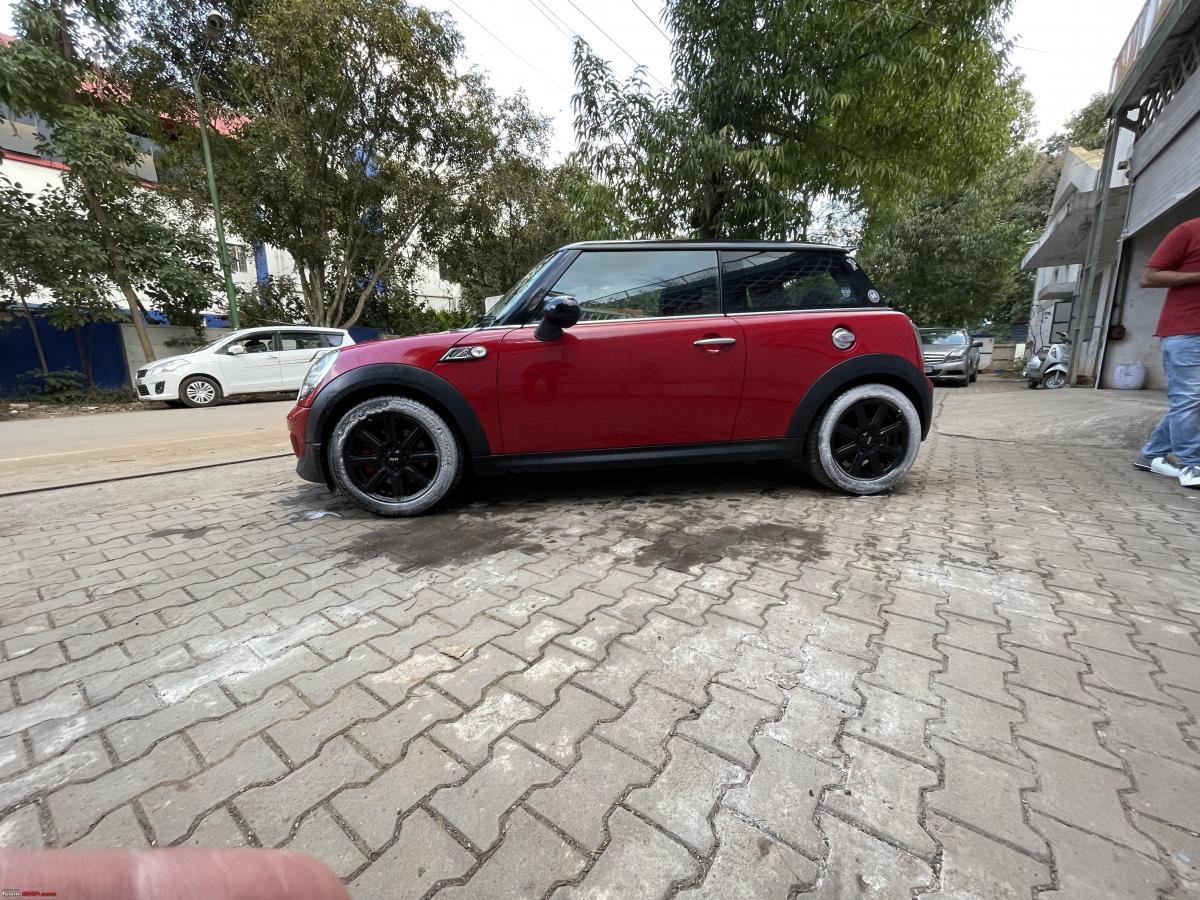

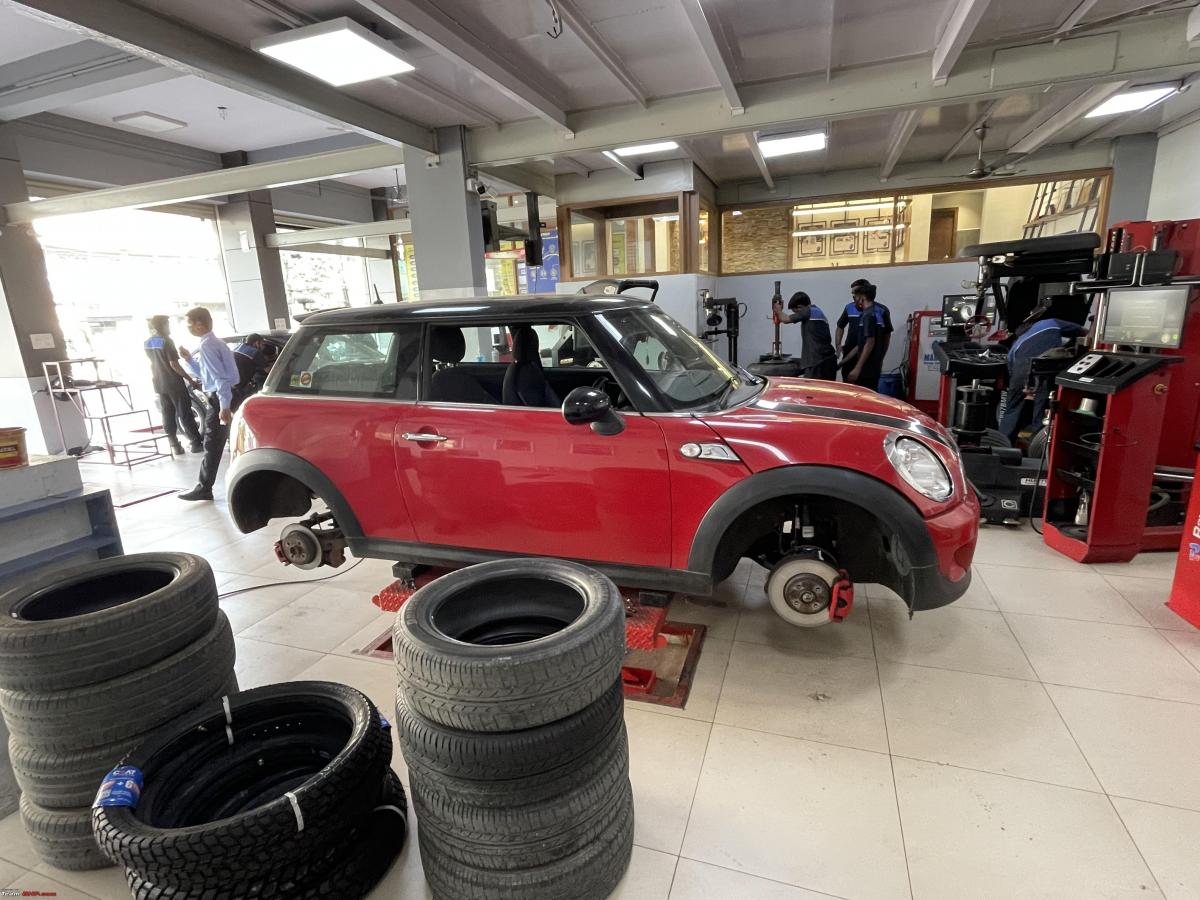
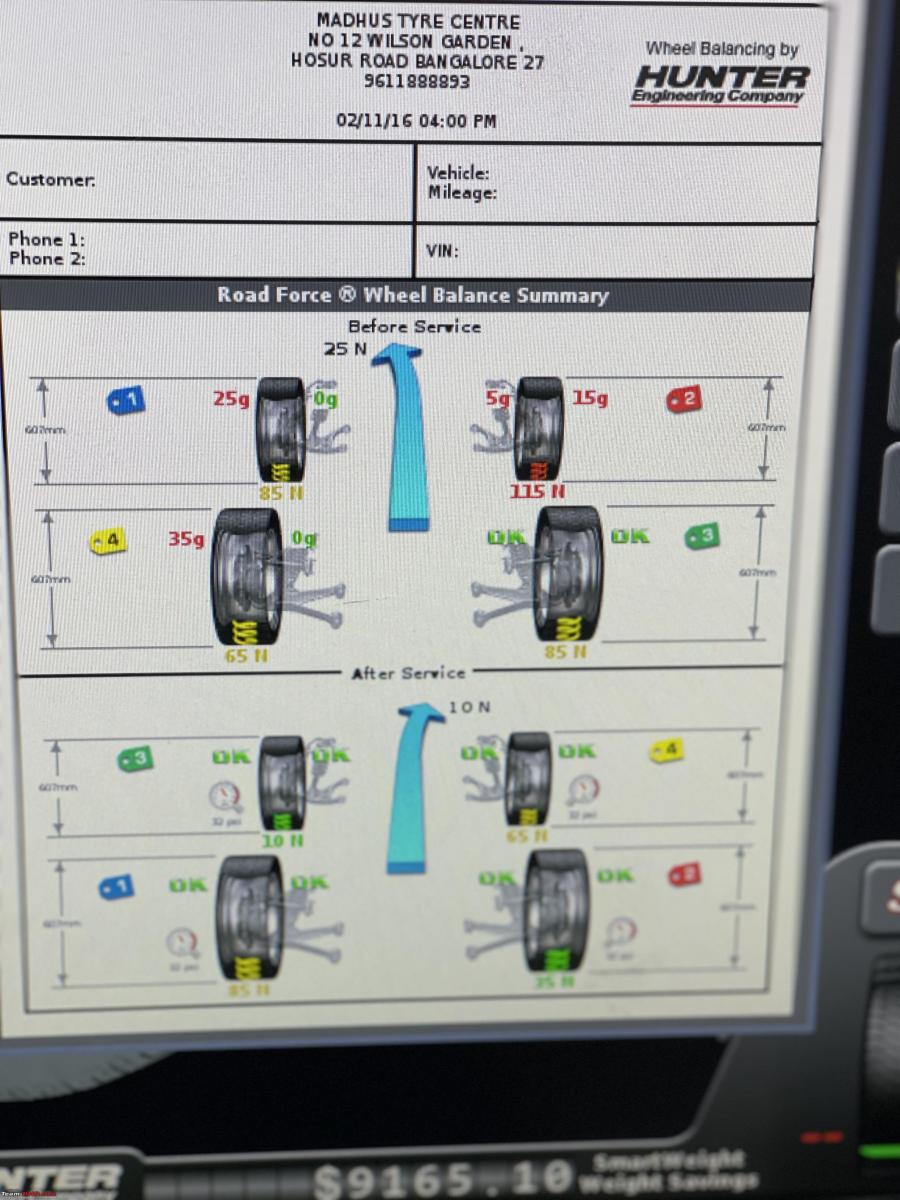
Check out BHPian comments for more insights and information.
- Tags:
- Indian
- Cooper
- Suspension
News
1996 Rover Mini Cooper: Ownership Experience
I have not come across too many cars with such history and so much paperwork. Each time I look at the car, it just makes me feel so proud to own this piece of British motoring history.
BHPian 51morris recently shared this with other enthusiasts.
Hello folks! Hope you are doing well and keeping safe.
This is a quick thread on my ownership of a Rover Mini Cooper (1996), a.k.a “Winston”. Since the Mini is one of the icons of the motoring world, I thought I must start with a quick history of the Mini and the events that led to the creation of this car.
DISCLAIMER: A lot of my understanding of the history of the Mini is from a wonderful book by Giles Chapman – Mini (60 years). Full credits to the author/publishers of this book, including facts and especially images.
The Suez Crisis and the need for a new breed of cars
Back in the 1950s, British roads were peppered with reasonably decent cars such as the Morris Minor, Austin A30 and the Ford 100E Anglia.
However, all this changed with the withdrawal of British troops from the Suez Canal in 1957. This led to a massive shortage of fuel supply. This brought about the need for a new car that could operate on the very barest of resources.
Designing a car like no other
While Sir Alec Issigonis (who also designed the hugely popular Morris Minor) and his team were in truly unchartered waters, they were clear, right from the onset, about what they were building. Issigonis knew for a fact that this would be a small car, yet spacious enough to seat 4 adults along with luggage. He wanted 80% of the interior space to be provided to passengers and luggage.
In order to keep the footprint of the car small, he decided that the car would be no more than 10 feet in length. With such a small footprint, the second requirement (of having to seat 4 adults along with luggage) was quite a challenge. The way he overcame this hurdle was simply brilliant.
Firstly, he decided that the 4-cylinder engine would be mounted transversely, feeding power directly to the front wheels. This was a first for the time as all cars had engines mounted front to back (and powered the rear wheels). The transverse engine immediately freed up space. The next challenge was the gearbox, which was normally mounted behind the engine – again eating into the cabin space. Issigonis decided that the gearbox would be mounted under the engine, thereby freeing up further space in the cabin.
Next, the wheels – these were pushed outwards to the extremities of the car. This not only resulted in more interior space but also had a remarkably positive impact on the overall handling of the car.
Finally, the doors/windows. Issigonis was obsessed with maximising cabin space and therefore decided that roll-down windows would need additional space in the door pads for the glass and the wind-up mechanism. Hence, the Original Mini came with sliding windows for the doors. The rear windows would only bevel out to let air in. This directly translated into massively deep door pockets.
For a car so small, it was unbelievably spacious on the inside. Such was the result of his obsession with space-saving.
Here are some early designs of Issigonis’ brainchild.
Copyright: Author/Publisher of Mini – 60 years
The cut-out view clearly shows the 80%-space-to-passengers-and-luggage concept.
Copyright: Author/Publisher of Mini – 60 years
A brief timeline of the Mini
The first Mini was launched in 1959 as the Austin Se7en and the Morris Mini-Minor. The car took the motoring world by storm and was received with wide-eyed amazement. It was a brilliantly designed car with extremely compact exterior dimensions that could swallow up a lot of luggage and seat 4 adults comfortably.
Copyright: Author/Publisher of Mini – 60 years
It handled like absolutely nothing on the roads at the time. Motoring journalists who drove the car just could not stop raving about how brilliantly it handled even though it only had an 899cc engine putting out a modest 43 BHP.
The Mini became an instant hit and went on to become hugely popular over the next 60 years (and still counting)! It wasn’t just the most common car in Britain but was the popular choice of celebrities around the world. Everyone wanted to own a Mini!
Over the years, many variants of the Mini were launched, including the Cooper S, launched in 1961, with a beefed-up engine/mechanicals and twin carbs. These went on to win the Monte Carlo rally beating much larger and more powerful cars. To this day, these early-day Cooper Ss are the most sought after and worth a huge amount of money.
Here’s a picture of the original Austin Mini Cooper S.
Copyright: Author/Publisher of Mini – 60 years
Many decades and many models rolled by. Rover owned and manufactured the Mini and sales were declining sharply. In the early 1990s, Rover decided to bring back the Cooper brand and launched the Rover Mini Cooper (and the Mini Cooper Sport) with a 1.3-litre MPI engine, pushing out 6 BHP. The car once again resurrected the fading interest in the brand and these were scooped up instantly. Here’s a picture of the mid-90s Rover Mini Cooper.
Copyright: Author/Publisher of Mini – 60 years
This is the exact model of the Mini that I bought! More on this in the next section.
In 1997, BMW finally bought Rover out. While they decided to get rid of most of Rover’s brands/models, they realised that the Mini was a brand name with huge potential. They, therefore, retained the Mini brand and started working on a complete redesign of the Mini. This was finally launched as the BMW Mini in 2001 and this car, like its predecessor, took the world by storm.
Copyright: Author/Publisher of Mini – 60 years
From then onwards, there has been no looking back for BMW with the Mini. While the cars have gotten bigger and bigger over the years, a Mini/Mini Cooper is still considered one of the most stylish and recognisable cars and continues to sell in huge numbers globally.
Introducing Winston, my 1996 Mini Cooper
I was fortunate to find a wonderful and very original Mini Cooper. This was owned by a kind lady who bought it in 1996 and did 42,000 gentle miles in it.
Here are some pictures of the car.
What makes a car truly special is the way it has been looked after. With this Mini, it was clear that the lady loved her car. Such was her passion and love for the car that I was handed over a briefcase full of paperwork. It was only when I started going through it in detail, I realised that I was fortunate enough to get my hands on a time capsule!
This is the folder containing all the documentation.
The documents are clearly categorised as “Mini Purchase”, “MOT” (yearly fitness certificate in the UK), “Service”, etc.
When I looked through the “Mini Purchase” folder, I was shocked to see the following:
- Original brochure that was handed over to her when she went to the showroom
- Original sales receipt dated October 24, 1996
- Original booklet
- Original instruction manuals
- AA roadside assistance membership cards
Original Invoice:
Showroom brochures:
Handbook that came with the car:
Instruction manuals and warranty cards:
Next up was the MOT folder which contains original certificates of EVERY SINGLE MOT done in the past 25 years, all arranged in chronological order.
Then there is the TAX folder – again, every tax reminder and tax-paid receipts for the past 25 years! In the UK, before road tax went online, there used to be a tax disc provided to the owner which had to be stuck onto the windshield, clearly visible to the rozzers from the outside. The car comes with every single tax disc from 2004 to 2015!
Finally, the service history – this folder contains receipts of every single service or repair done on the car. A nice surprise in this folder were letters of correspondence between the lady and the dealership. These were complaints that were sent to the dealership for shoddy washing of the car post service and the dealership’s apology in response!
I have not come across too many cars with such history and so much paperwork. Each time I look at the car, it just makes me feel so proud to own this piece of British motoring history.
I was even handed over two sets of original keys and each set came with the original immobiliser fob.
This is an unrestored car, lovingly preserved in its original condition. Whilst most of the car (99%, I’d say) is in fantastic condition, the fact that it is unrestored and was genuinely used as a daily runner, there are tiny bits that will eventually need work. I’d rather own a genuine car like this than one that has had a nut and bolt restoration, thereby, losing its originality completely.
Continue reading 51morris' review for BHPian comments, insights & more information.
News
2022 Mini John Cooper Works facelift unveiled
The Mini John Cooper Works now comes with updates to the exterior and interior. There is an optional adaptive air suspension as well.
Mini has given the John Cooper Works some updates for 2022. The car gets some changes to the exterior and interior as well as the suspension.
At the front, the Mini John Cooper Works gets round LED headlights, a hexagonal radiator grille and larger air openings in the bumper. The front side panels and the rear bumper feature redesigned model-specific side scuttles. The rear bumper also features a diffuser.
On the inside, the car gets an updated infotainment head unit. It gets a new software with better graphics and Live Widgets, which can be selected by a means of a swiping motion on the touchscreen. Additionally, there are some new ambient lighting options. In "Lounge" mode, the display surfaces appear in shades of blue and turquoise, which when switched to "Sport" mode also changes the screen backgrounds to glow in red and anthracite. On request, the colours of the displays can be linked to the driving modes that are standard in the Mini John Cooper Works.
The third area where the Mini John Cooper Works gets an update is the suspension. The car now comes with an optional adaptive air suspension.
The Mini John Cooper Works facelift comes with the same 2.0-litre, four-cylinder, twin-turbo petrol engine mated to a 6-speed manual transmission as the outgoing car. This engine develops 231 BHP and 320 Nm. An eight-speed automatic gearbox is offered as an option.
- Tags:
- Indian
- International
- Cooper
News
Mini John Cooper Works GP Inspired Edition launched
The John Cooper Works GP Inspired Edition can accelerate from 0-100 km/h in 6.1 seconds. The driver can select between 3 drive modes - Mid, Sport and Green.
As a tribute to the John Cooper Works GP, Mini has launched an Inspired Edition at Rs. 46,90,000 (ex-showroom). Only 15 units of this limited edition variant will be offered for sale.
On the outside, the Inspired Edition gets an exclusive Racing Grey Metallic shade as well as silver roof, mirror caps and spoiler. The Mini comes with 18-inch alloys finished in dual tone, GP-badged hub caps and piano black headlights and rear light trims, door handles, fuel filler cap, front grille surround and front and rear Mini emblems.
On the inside, the John Cooper Works GP Inspired Edition gets leather wrapped steering with red stitching, 3D-printed paddle shifts with GP badging, stainless steel pedal caps and GP-badging on door sills.
The Mini John Cooper Works is powered by a 2.0-litre, 4-cylinder turbocharged petrol engine that produces 228 BHP and 320 Nm. It is paired with an 8-speed automatic gearbox. Mini claims that the car can accelerate from 0-100 km/h in 6.1 seconds. The driver can select between 3 drive modes - Mid, Sport and Green.
Standard safety features include front airbags, Brake Assist, 3-Point Seat Belts, Dynamic Stability Control, Crash Sensor, Anti-lock Braking System, Cornering Brake Control and Run-flat Indicator.
News
Mini hatchback & convertible facelift launched in India
Mini has launched the Cooper facelift in India at prices starting from 29.70 lakhs (ex-showroom). The car will be offered in three versions - a 3-door hatchback, a 5-door hatchback and a convertible.
The front end features a large grille finished in gloss black, circular headlamps with LED DRL rings and fog lamps. The car also gets oval shaped ORVMs and larger LED tail lamps with a Union Jack design.
On the inside, the cars get a 6.5-inch infotainment system offered as standard while a larger 8.8-inch touchscreen unit is available as part of the optional Mini Wired package, which also includes a touchpad controller, MINI Find Mate, Navigation System Professional, MINI Connected XL, telephony with wireless charging and a 20 GB internal hard drive. The equipment list also consists of Apple CarPlay, a 12 speaker Harmon Kardon audio system, ambient lighting, a multi-functional leather steering wheel, and an optional panoramic sunroof. In addition, the Cooper comes with cruise control, optional Park Assistant, rear view camera, head-up display, auto start/stop, brake energy recuperation and active cooling air flaps.
The MINI 3-Door Cooper S and Convertible Cooper S are powered by a 2.0-litre, turbocharged 4-cylinder petrol engine which produces 189 BHP and 280 Nm of torque @ 1,250 rpm, paired with a 7-speed dual-clutch transmission. The 3-Door Cooper D and 5-Door Cooper D come with a 1.5-litre, 3-cylinder diesel engine that produces 112 BHP and 270 Nm @ 1,750 rpm. The diesel engine is mated to a 6-speed automatic gearbox. There are 3 driving modes - MID, Sport and Green.
Standard safety features offered on the new MINI include dual front airbags, ABS with brake assist, Cornering Brake Control, Dynamic Stability Control and run-flat tyres.
Variant-wise ex-showroom prices:
Petrol
3-door Cooper S - Rs. 33.20 lakh
Convertible Cooper S - Rs. 37.10 lakh
Diesel
3-Door Cooper D - Rs. 29.70 lakh
5-Door Cooper D - Rs. 35.00 lakh
News
New Mini Convertible unveiled
BMW has revealed its new Mini Convertible which adopts all the updates from the 2015 Mini Cooper.
This new car is larger than its predecessor measuring 3,821 mm x 1,727 mm x 1,415 mm in length, breadth and height. Its wheelbase has been increased to 2,495 mm and has a wider front and rear track.
The Convertible still gets a fabric soft-top, which can automatically open or close with just a click of a button on the key-fob or interior switch. The entire process takes 18 seconds and can be done with the car in motion at speeds up to 29 km/h.
It can carry 2+2 passengers and has a larger 215L boot space (160L with the roof down). The boot loading area is slightly wider and the rear seats can be folded in a 50:50 ratio.
It will be available with 2 petrol and 1 diesel engine options. The TwinPower Turbo petrol motors include a 2.0 litre, 4-cylinder unit producing 189 BHP and a 1.5 litre, 3-cylinder unit producing 134 BHP. The diesel is powered by a 1.5 litre, 3-cylinder motor which produces 114 BHP. Internationally, these will be available with a 6-speed manual or a 6-speed automatic transmission with paddle shifters.
This new Mini has got a more rigid frame and an invisible roll bar to improve safety, better acoustics and sportier driving dynamics.
- Tags:
- Indian
- BMW
- Convertible
- Cooper
- Cooper S
News
Third-gen Mini launched in India at Rs. 31.85 lakh
The third-generation Mini has been launched in India at prices starting from Rs. 31.85 lakh (ex-showroom, all India). While the car is available in India in both 3 and 5-door versions, it is only sold in Cooper D guise.
The new Mini uses BMW 's UKL platform. It is larger than the outgoing model. The 3-door version is 3821 mm long, 1727 mm wide and 1414 mm tall. This makes it 98 mm longer, 44 mm wider and 7 mm taller than the second-generation car. The wheelbase of the car has been lengthened by 28mm. The 5-door version measures 4005 mm in length, 1727 mm in width and 1,425 mm in height. It has a wheelbase of 2567 mm. The luggage capacity of the Mini 3-door with the rear seats in place is 211 litres, while that of the 5-door is 278 litres. While the Mini retains its iconic styling, it does get some changes to its exterior. The car features a new grille, LED headlights with LED daytime running lights, LED tail lamps and a new range of body colours.
The interior of the new Mini is more spacious than its predecessor. There is a new instrument cluster located behind the steering wheel. The centre of the dashboard now houses the car's entertainment and navigation systems and other infotainment features.
The Mini Cooper D is powered by a 1.5-litre three-cylinder diesel engine that develops 114 bhp @ 4000 rpm and 270 Nm of torque @ 1750 rpm. Transmission duties are taken care of by a 6-speed automatic gearbox.
There is no petrol engine available at the moment. However, the Cooper S variant with a 1.5-litre, 4-cylinder petrol engine pumping out 189 bhp and 280 Nm of torque is expected in 2015.
The Mini Cooper D is brought to India as a CBU and therefore attracts maximum import duty.
Prices (ex-showroom, all India):
- Cooper D 3-door: Rs. 31.85 lakh
- Cooper D 5-door: Rs. 35.20 lakh
News
New Mini brochure, specifications leaked ahead of launch
The brochure and specifications of the new Mini have been leaked ahead of its launch in India.
The Mini will be available in 3-door and 5-door versions. The brochure gives us an idea about the features that the car will be equipped with, such as the upholstery, interior trim, infotainment system, applications and connectivity and driving aids like park assist.
The 5-door Mini will come in six variants - One, Cooper and Cooper S (petrol), One D, Cooper D and Cooper SD (diesel). The One comes with a 1.2-litre, 3-cylinder engine. The One D, Cooper and Cooper D come with 1.5-litre, 3-cylinder power plants and the Cooper S and Cooper SD get 2.0-litre, 4-cylinder units.
The 3-door Mini gets an additional variant - the One First, which sits below the One. It shares the same 1.2-litre, 3-cylinder petrol engine as the One, but churns out lesser power and torque.
The new Mini is scheduled to be launched tomorrow.
Source: GaadiWaadi
News
Next-gen Mini to be launched on November 19
Mini India has announced that it will launch the all-new Mini 3-door and 5-door on November 19, 2014. The had recently released a teaser indicating that the launch of the cars was near.
The new Mini's styling is similar to the outgoing model. However, it sports some changes like redesigned headlights with LED daytime running lights, larger rear lights and five new colours. The car uses BMW 's UKL platform and is longer, wider and taller than the model it replaces. It has a longer wheelbase as well with wider tracks.
Compared to the outgoing model, the new Mini has more spacious interiors with redesigned rear seats and improved boot space. There is a new instrument cluster that is positioned in front of the driver on the steering column, directly in the line of vision. The centre of the dashboard, where these were originally located, now houses the car’s infotainment system.
The Mini Cooper gets a 1.5 litre three-cylinder producing 134 bhp and the Mini Cooper S is powered by a 2.0 litre four-cylinder engine developing 189 bhp. Both engines use Mini's TwinPower turbo technology. The Cooper D uses a 1.5 litre three-cylinder diesel engine that churns out 114 bhp.
News
Next-gen Mini coming to India in 2015
The all-new Mini will be launched in India in early 2015. The company has released a teaser indicating that the new range of Mini vehicles will be here shortly. Through a promotional campaign, the company is giving a chance to contestants to drive the all-new Mini.
The new Mini is based on BMW 's UKL platform. It retains its iconic styling, but is longer, wider and taller than the model it replaces. It has a longer wheelbase as well with wider tracks. The car gets redesigned headlights with LED daytime running lights, larger rear lights and five new colours.
On the inside the car features improved legroom and a new instrument cluster positioned in front of the driver on the steering column, directly in the line of vision. The centre of the dashboard, where these were originally located, now houses the car’s entertainment and navigation systems and other infotainment features. The rear seats have been redesigned and the boot space has been increased as well.
There are two new engines on offer. While the Mini Cooper gets a 1.5 litre three-cylinder producing 134 bhp, the Mini Cooper S is powered by a 2.0 litre four-cylinder engine developing 189 bhp. Both engines use Mini's TwinPower turbo technology. The Cooper D is powered by a 1.5 litre three-cylinder diesel engine that churns out 114 bhp.
The Mini will be brought to India as a CBU.







